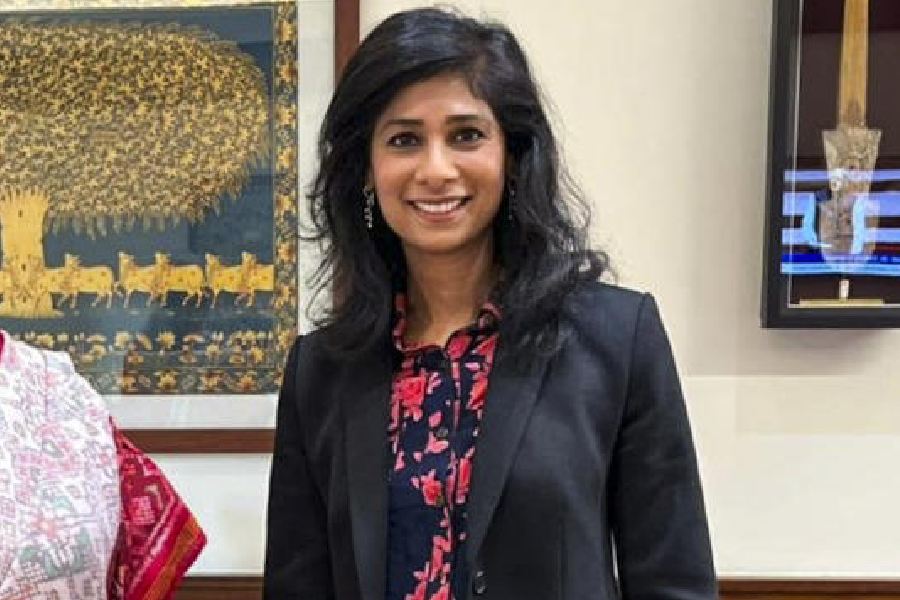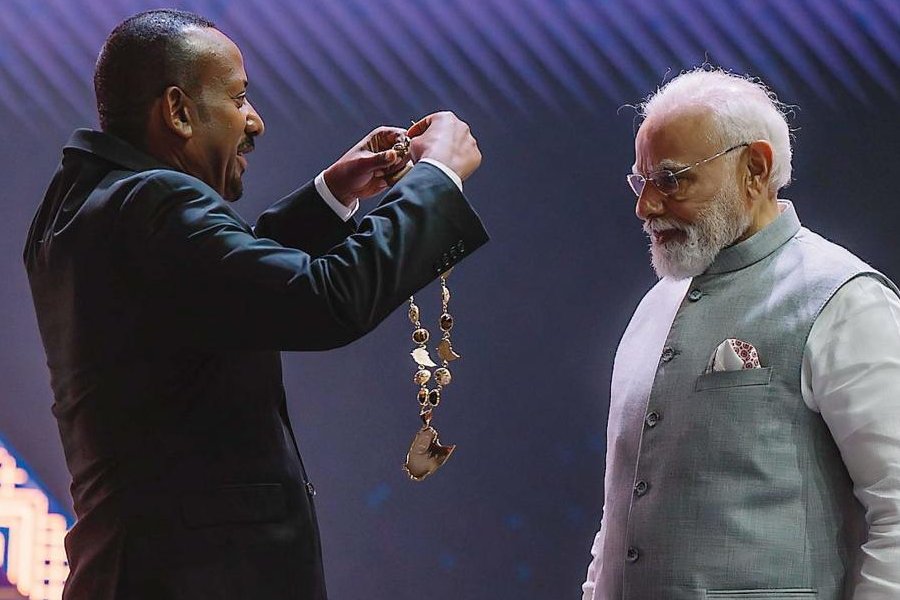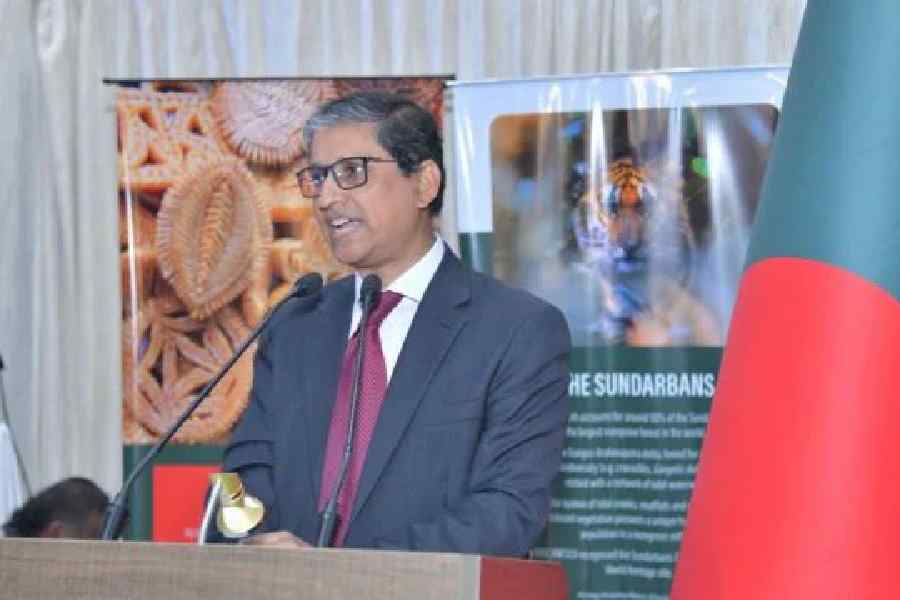 |
On a warm December day in Tumkur, Karnataka, a 30-something is teaching his 100-strong audience in the local auditorium to access the website of the Unique Identification Authority of India (UIDAI) and verify the identity of people using their Aadhar numbers. The “students” — revenue officers, system administrators and village-level accountants — dutifully take down notes and ask questions.
They will require these skills from January 1 when beneficiaries of welfare schemes will have payments being credited dir ectly into their bank accounts, which will be linked to their Aadhar numbers. Tumkur is one of the 51 pilot districts where the government’s ambitious direct cash transfer programme is scheduled to kick off.
Video-conferences convened by nine central ministries administering these schemes have become a regular affair in these districts. “If district collectors want, they can get anything done,” a health ministry official said when a collector from Jharkhand suggested that January 1 was too ambitious a target.
As the countdown starts for the implementation of what could be one of the largest direct cash transfer programmes in the world, the sense of urgency within the government is palpable.
 |
Finance minister P. Chidambaram and Planning Commission deputy chairman Montek Singh Ahluwalia are keeping regular tabs on preparations. Both addressed a conference of collectors in Delhi on 13 December. Two days later, Chidambaram visited Rajasthan’s Alwar, one of the pilot districts, to take stock of its readiness. Visits to four more districts are scheduled.
In the Prime Minister’s Office (PMO), principal secretary Pulok Chatterjee is monitoring preparations on a daily basis. Officials of the Planning Commission (the co-ordinating body) have frequent meetings with the nine central ministries. And in the UIDAI, chairman Nandan Nilekani and director general R.S. Sharma have little time for anything else.
The Congress party is also pitching in. On December 14, Rahul Gandhi addressed the district party chiefs of the 51 districts asking them to help make the programme a success.
The pressure is understandable. After all, the prestige of the government and the Congress party is at stake.
Under the programme, welfare payments would be electronically transferred into the bank accounts of beneficiaries, junking the earlier system of either handing out cheques or cash. The bank accounts would be linked to the biometrics-based Aadhar number. This is expected to eliminate fraud and corruption in the administration of welfare schemes.
The funds will flow through the Aadhar Payment Bridge (APB), an electronic system managed by the National Payment Corporation of India (NPCI), which will ensure that the payment is credited to the beneficiary’s account the same day as it is sanctioned by the government department.
“The government has asked us to be ready for one million transactions a day. We can process even 10 million within four hours,” says A.P. Hota, NPCI managing director and CEO.
The programme is seen as a precursor to an eventual shift to direct cash transfer of subsidies, where the poor will get cash support to buy goods from the open market, ending the practice of the government keeping prices low. “The initial objective is to demonstrate the power of technology to cut out middlemen, eliminate multiple claimers and ensure instantaneous delivery. Once we succeed on a small scale, confidence will increase,” says Ahluwalia.
Cash transfer programmes have worked well in Mexico, Brazil and the Philippines but these countries, notes an economist at a multilateral lending institution, rolled the programme out gradually, ensuring that the infrastructure and systems were in place beforehand.
District collectors have been told to focus on digitising the list of beneficiaries under the various welfare schemes, ensuring that all these beneficiaries have an Aadhar number and a bank account and finally seeding these three lists with each other so that payments go only to the beneficiaries. “We need accuracy, minimum disruption and seamless transition,” says an official who is monitoring the exercise.
 |
| EASY MONEY: (Top) Finance minister P. Chidambaram is keeping tabs on the programme; (above) UIDAI chairman Nandan Nilekani with rural development minister Jairam Ramesh |
“We have been preparing for this for nearly nine months,” says UIDAI’s Sharma. In February, UIDAI launched the infrastructure for online authentication of Aadhar numbers to eliminate duplication of identities and some pilot programmes have validated this. One was in the East Godavari district of Andhra Pradesh, where Aadhar was used to eliminate bogus claimants for subsidised foodgrains.
And yet, the level of readiness of the 51 districts varies hugely. In Andhra Pradesh and Karnataka, with widespread use of information technology in the government (or districts like Alwar that are already implementing other pilot projects), digitisation of lists of beneficiaries is on course. However, records are still maintained manually in Jharkhand, Tripura and Sikkim. Several collectors came to know that their districts have been selected for this programme less than two weeks ago.
Though the government claims that only districts with 80 per cent Aadhar coverage have been chosen, collectors of several districts reported much lower enrolment. Besides, 80 per cent coverage of the population of a district may still leave a large number of beneficiaries of welfare schemes without an Aadhar number. So collectors have been told to identify beneficiaries without an Aadhar number and focus on enrolling them.
But can the UIDAI system take the load of so many enrolments in a short time? Yes, says Sharma. “We have the capacity to issue one million numbers in a day and are issuing close to 7,00,000 a day. Our entire focus is on implementing this.”
The bigger challenge will be to ensure that beneficiaries have bank accounts. Banks are reluctant to open a large number of no-frills accounts in remote areas or appoint a large number of business correspondents (individuals who are representatives of banks).
In East Godavari, collector Neetu Kumari Prasad, who has the challenge of getting 6,00,000 accounts opened by December 31, has been meeting bank managers every week for the last six months. “It’s only because of pressure from Delhi over the last one month that we are seeing a change in attitude,” she laughs.
In Tumkur, a survey is being conducted to identify below poverty line households without bank accounts. In Maharashtra, where the programme is to be implemented in five districts, the state government kicked off a “bank at your doorstep” scheme covering 27,000 gram panchayats on December 17.
As in the case of Aadhar enrolments, collectors and bank officials are being encouraged to hold camps to open accounts for beneficiaries on a priority basis. Though banks ask for the Aadhar card while opening accounts, provisions are being made to make Aadhar and enrolment numbers suffice for now. At the collectors’ conference on December 13, department of financial services secretary D.K. Mittal told collectors they were free to approach him if banks were not responding favourably.
Unfortunately, not all banks have come on to the APB, which is essential for the electronic payments to go through. Till now, only 19 public sector banks are on the network. “We are fully geared and ready to go. It is now up to banks to get certified,” says Hota.
With loose ends still to be tied up, the government is taking care to see that no existing beneficiary is denied a scheduled welfare payment only because of the lack of an Aadhar number or bank account.
So is the January 1 deadline unrealistic? “If we wait for everything to be perfect before starting, things will take longer,” says a central government official.
Sometimes, says the economist at the multilateral lending institution, it is better to ram things through. In Mexico, the government sent armoured vans with cash to remote rural areas till banking solutions were worked out, he says.
“By the end of January certainly a lot of welfare payments will go electronic,” says a senior government functionary.
The nation will be watching.










